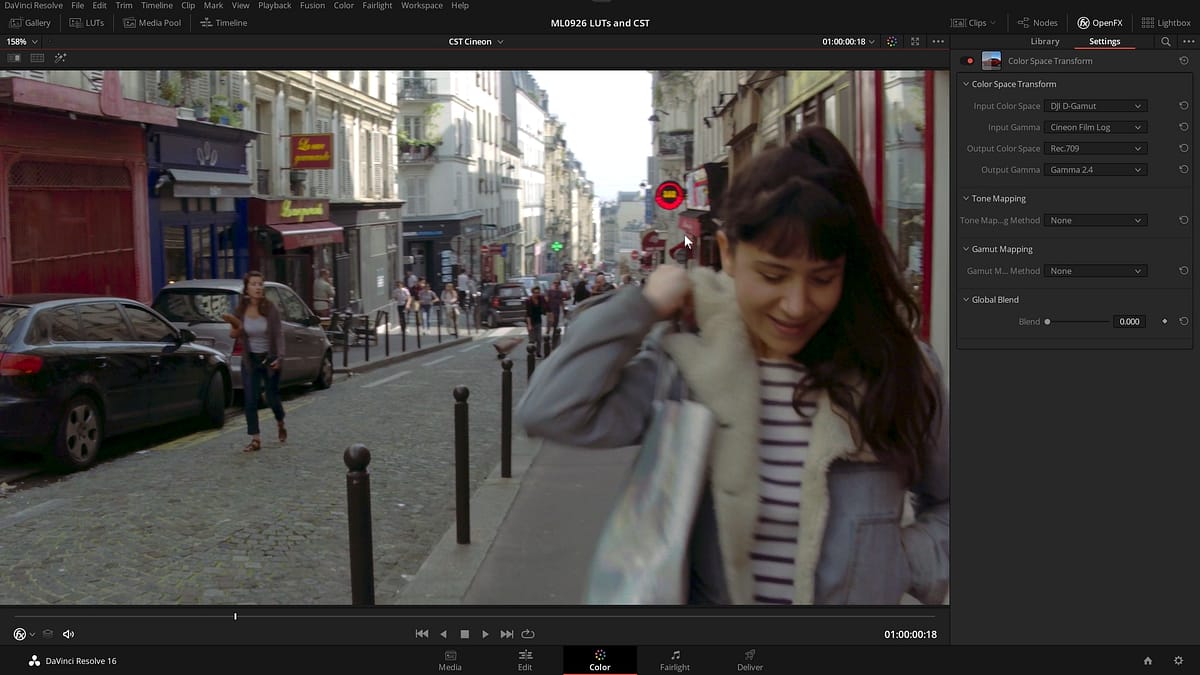| Series |
|---|
Day 13: 24 Insights In 24 Days – 2020 New Year Marathon!
Replacing Camera LUTs with Resolve’s ‘Color Space Transform’ Effect (using a Cineon Twist)
DaVinci Resolve’s Color Space Transform (CST) ResolveFX plug-in has opened up a range of new advanced workflow opportunities for colorists. If you want to get beyond the traditional limitations of Look-Up Tables, including the facts that they’re hard to modify (without 3rd party software) and that they’re not very granular, then the CST is a great way to go. What precisely does the CST plug-in do (which is available to both free and paid users of DaVinci Resolve)? Here’s what the manual says:
[The Color Space Transform plugin lets] you perform the kind of color transforms that LUTs do, but instead of using lookup tables, this plug-in uses the same math used by Resolve Color Management (RCM) in order to do extremely clean color transforms without clipping.
The upshot? You can create a color-managed pipeline within a non-color managed (YRGB) project – and do LUT-like camera-specific transforms at a cleaner mathematical level.
‘The Color Mangled Workflow’: Going where camera LUTs don’t tread
In this Insight, learn how I’m starting with camera-specific LUTs but modifying them slightly to give me an easier starting point – while maintaining the benefits of camera-specific LUT transforms. While my term ‘color mangled’ is very tongue-in-cheek, I think it’s more accurate to call this technique, a ‘CST Cineon Workflow’. As you’ll see, the Cineon Gamma transform is the key to this process. But there are limitations that seem evident to me:
Member Content
Sorry... the rest of this content is for members only. You'll need to login or Join Now to continue (we hope you do!).
Need more information about our memberships? Click to learn more.
Membership optionsMember Login
Additional Downloads
Sorry... downloads are available for Premium Members only.
Become a Premium Member

